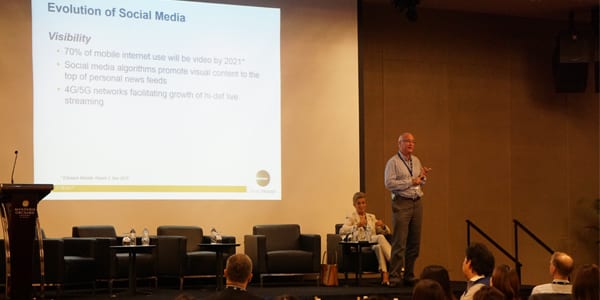 The dramatic photos and videos of an engine explosion taken by passengers on an Air France A380 super jumbo flying from Paris to Los Angeles last week were a reminder of the hyper-visible world in which airlines now operate. Any incident, no matter where it happens, may be seen by people around the world in real time – or at least, as soon as a wifi connection is available.
The dramatic photos and videos of an engine explosion taken by passengers on an Air France A380 super jumbo flying from Paris to Los Angeles last week were a reminder of the hyper-visible world in which airlines now operate. Any incident, no matter where it happens, may be seen by people around the world in real time – or at least, as soon as a wifi connection is available.
That creates extraordinary pressure on the airline to respond to breaking news of a story it may not even be fully aware of – while anyone who sees the pictures can draw their own conclusions. The damage done to United Airlines’ reputation and share price in April after it mishandled the infamous “drag and drop” incident, when a doctor was manhandled off an overbooked flight while fellow passengers filmed on their cellphones, shows the perils of getting it wrong.
Airlines are not alone – any situation in which people are disappointed, inconvenienced, angered, or endangered may produce thousands of images or even live-streamed video that tells the story from their personal point of view, as it happens. Within the last few days, horrifying footage of the mass shooting in Las Vegas, police brutality in Barcelona and the ongoing suffering across the Caribbean have brought the unfiltered experiences of people at the heart of the story direct to our screens, which has become routine during any major event.
There are already more mobile phones in circulation globally than there are people (103 percent of the world’s population, according to the UN organisation ITU) and Moore’s Law predicts the speed and capacity of data networks will continue to increase. By 2030, every person on the planet will – at least in theory – have access to fast wireless broadband, underpinning the inexorable progression from still images to grainy video, to high-definition live streaming on social platforms like Facebook and Snapchat, from anywhere. Ericsson estimates that within the next four years, 70 percent of all mobile internet use will be to watch (or upload) video.
For airlines like Air France, the challenge is compounded by shortage of resources outside their home markets, extensive use of third-party contractors, consolidation into holding groups, brand fragmentation, franchising, specialist flight-tracker websites and political interference, with or without government ownership of the carrier involved. More than 50 airlines also offer on-board wifi, which potentially would allow passengers to live-stream their experience of a developing crisis while still airborne (Air France will install wifi from 2018).
An IATA conference for aviation communicators in Singapore last week addressed this dilemma: in an unfolding crisis, how do you verify information, deploy resources, engage with the people affected or attempt to influence the narrative, when the watching world already knows at least as much as you do? And with trust in institutions and the “mainstream media” at an all-time low in an era of so-called #FakeNews, how can a company or its leadership be seen as a trusted and credible source of information in a crisis?
Unfortunately there are no easy answers. But “best practice” for the airlines applies to any company or brand. It starts with controlling the controllables. Use social listening as an early-warning capability, and integrate all available channels – online and offline – into the overall response plan. Ensure consistency in branding and message across every touchpoint, to every audience. Follow through on the promises you make, treat those affected as you would expect to be treated yourself – and above all, be authentic!
